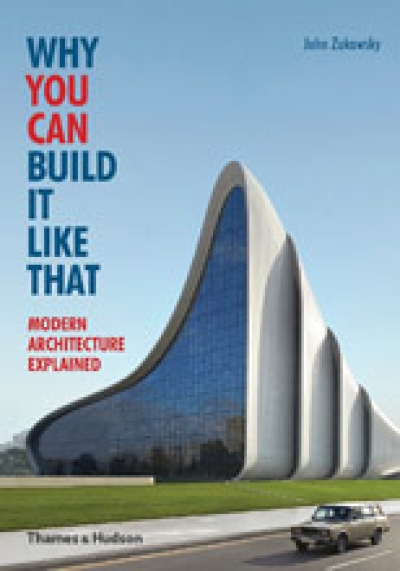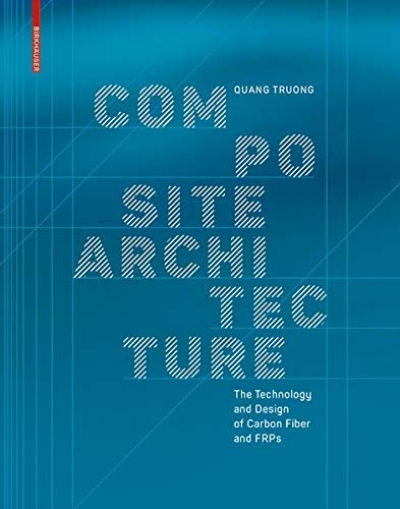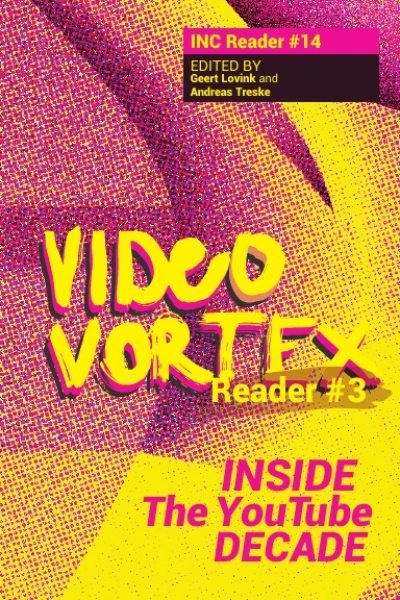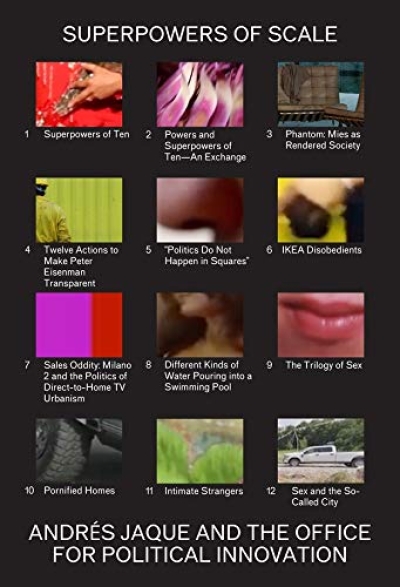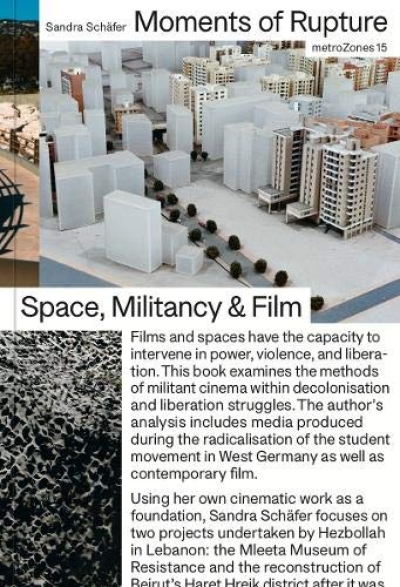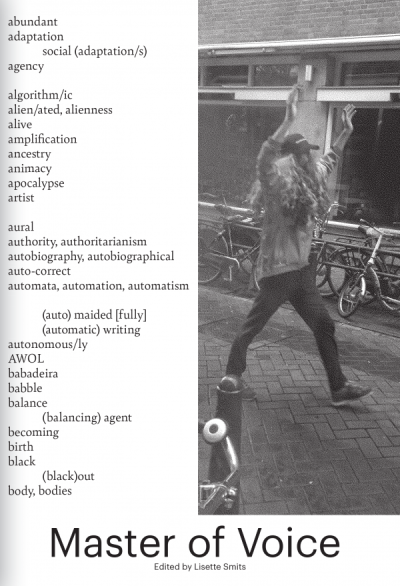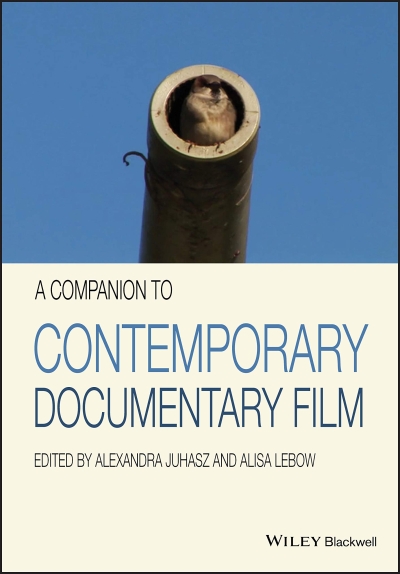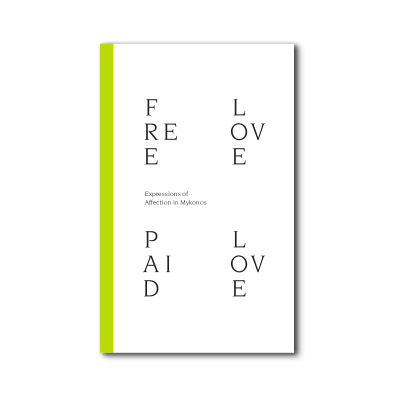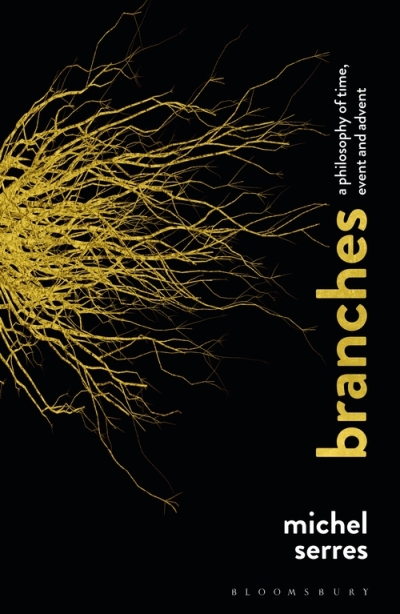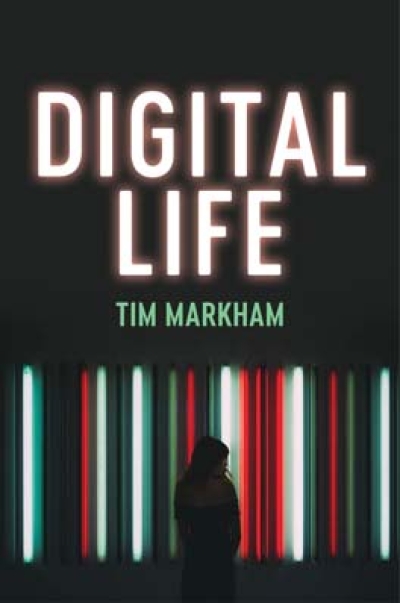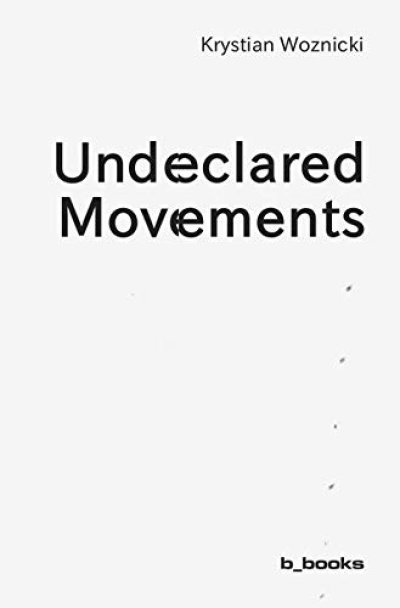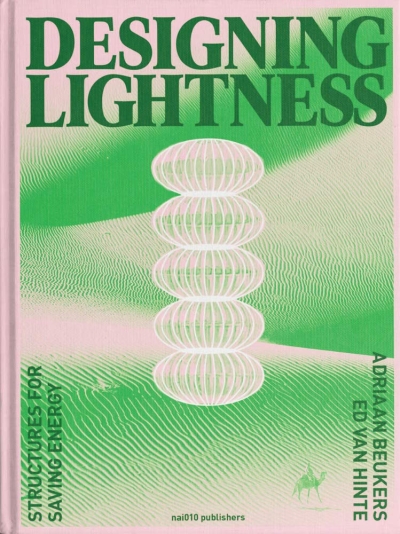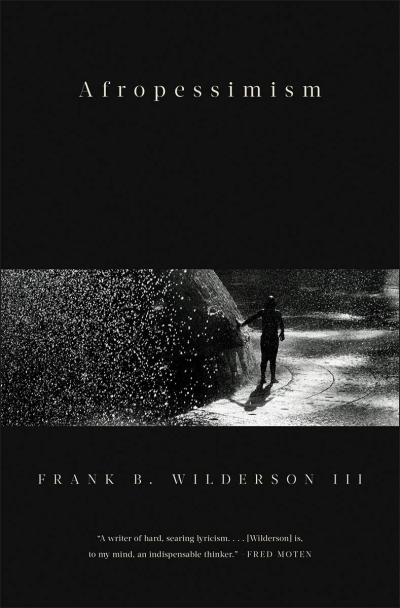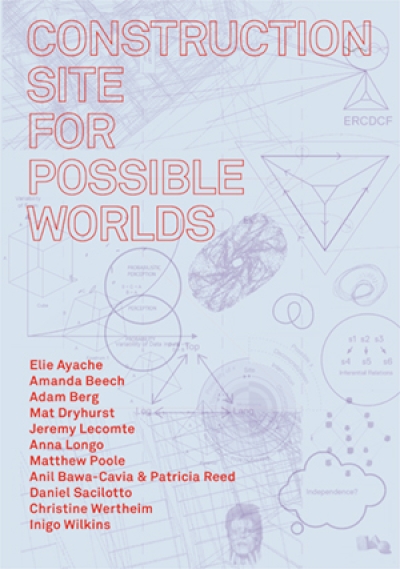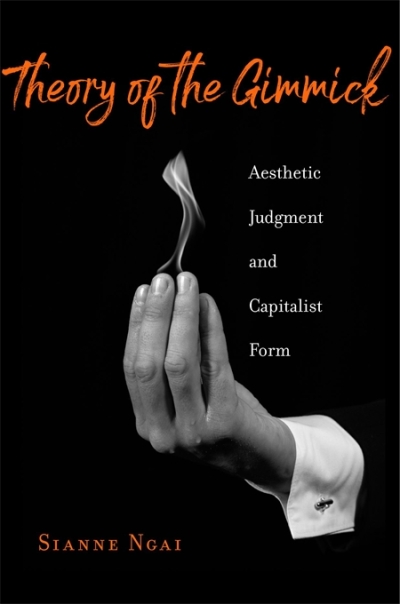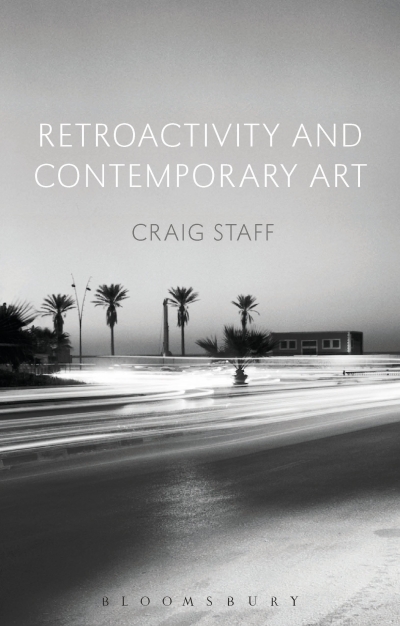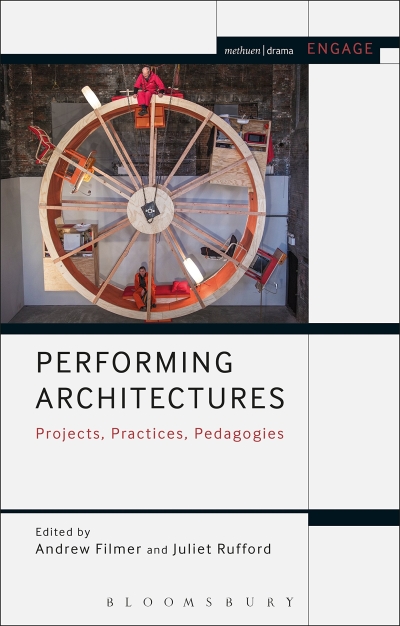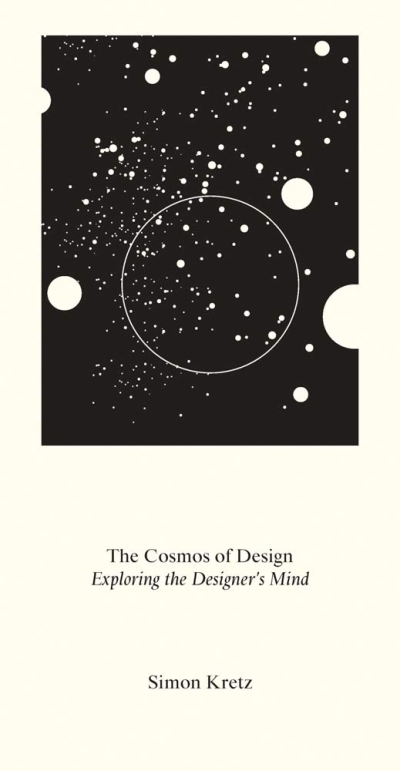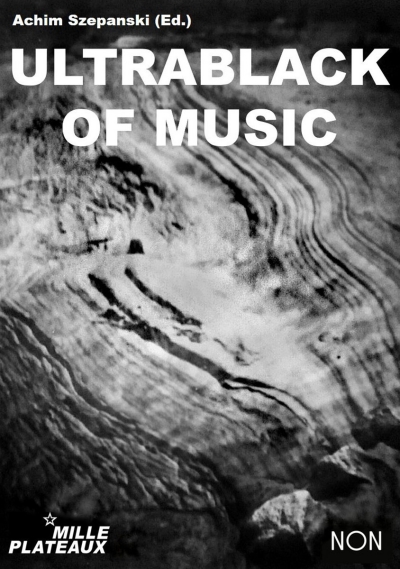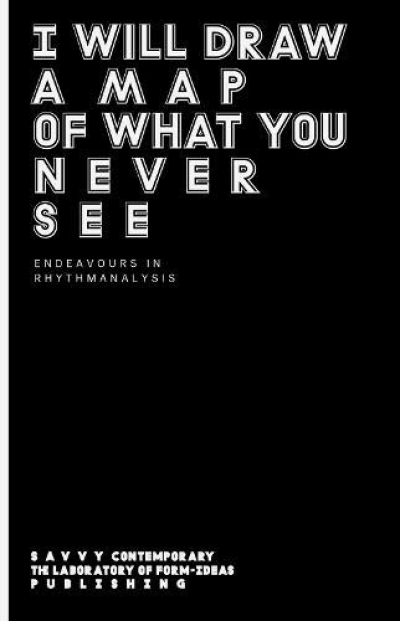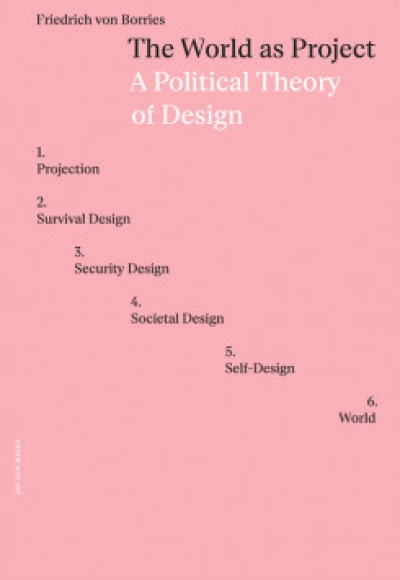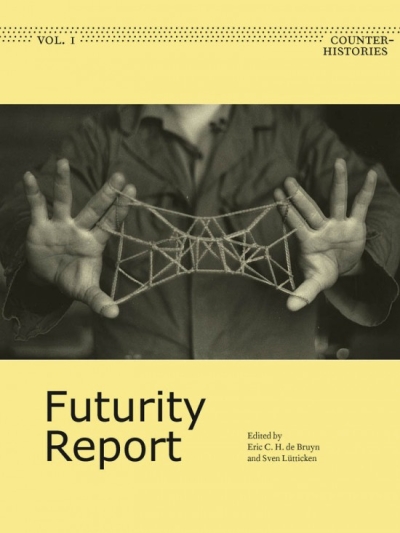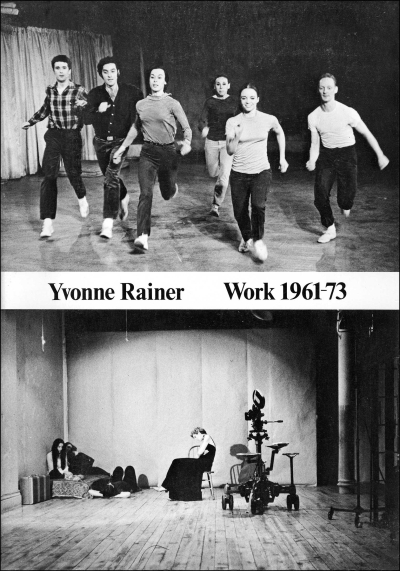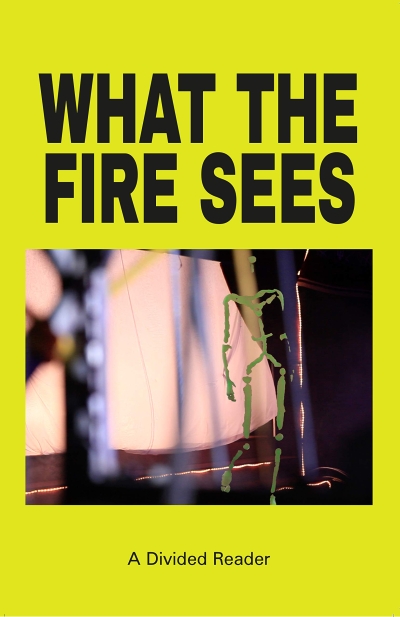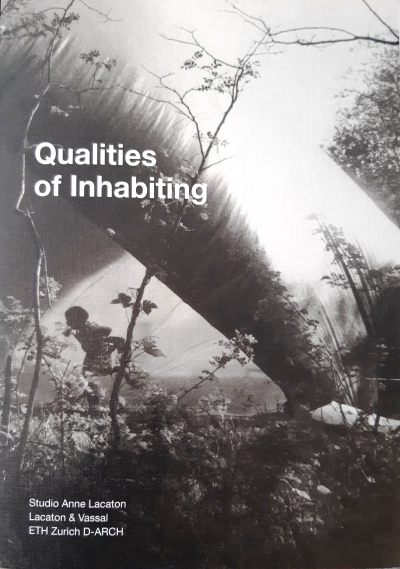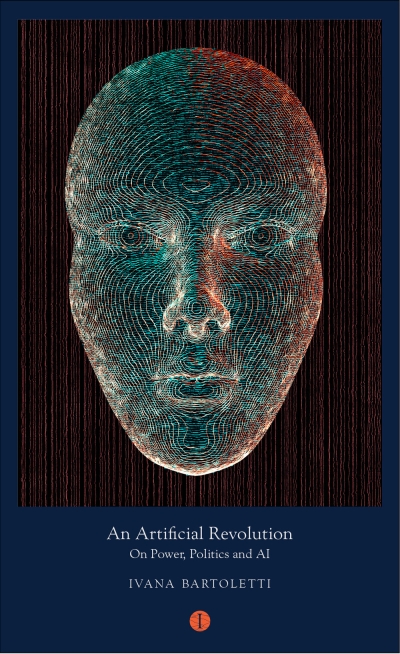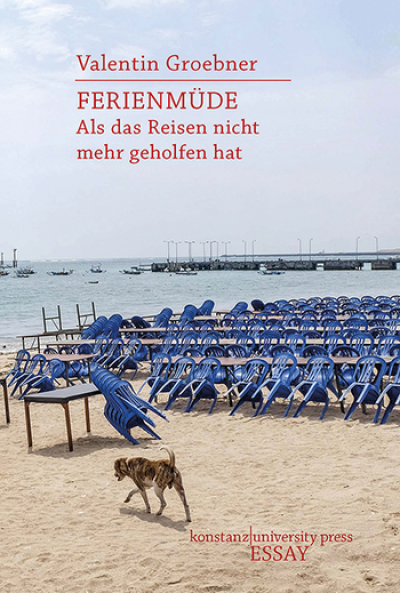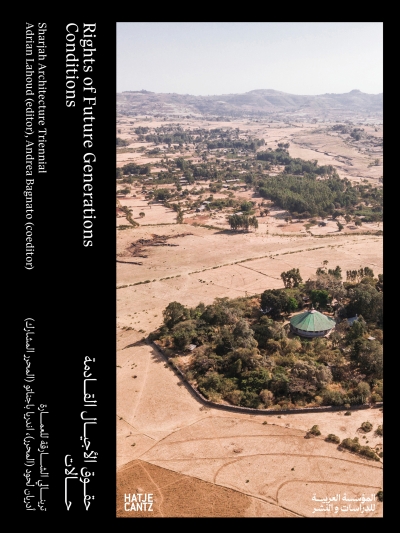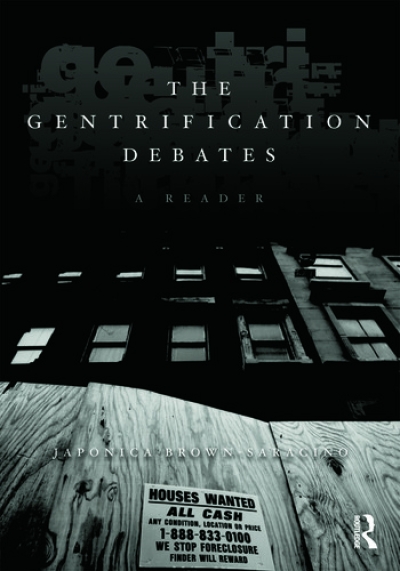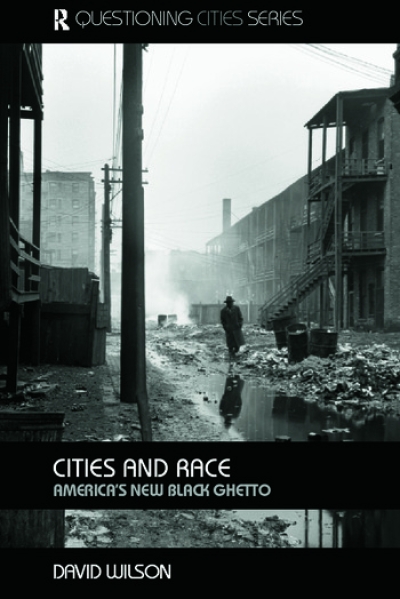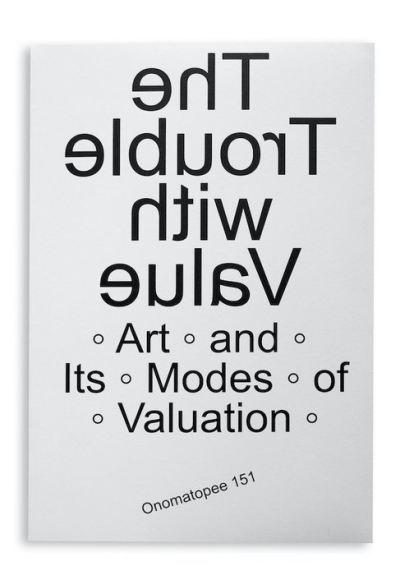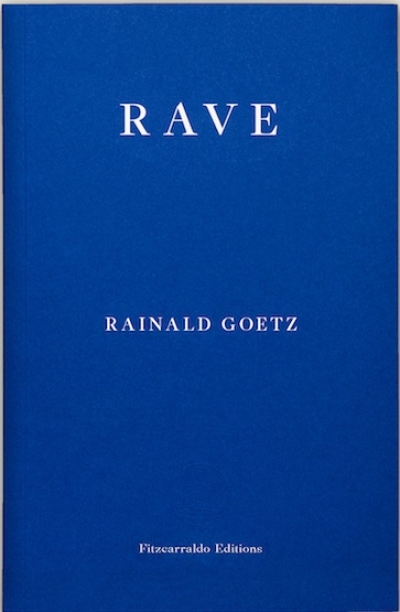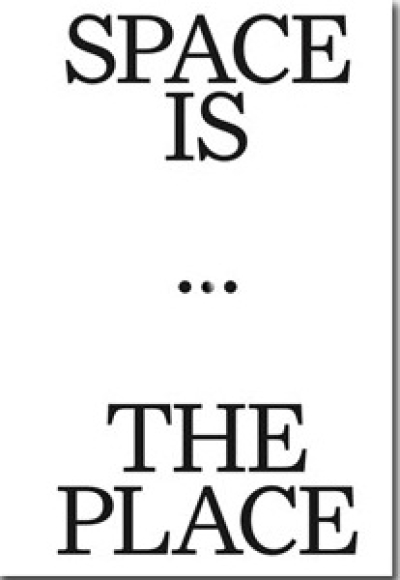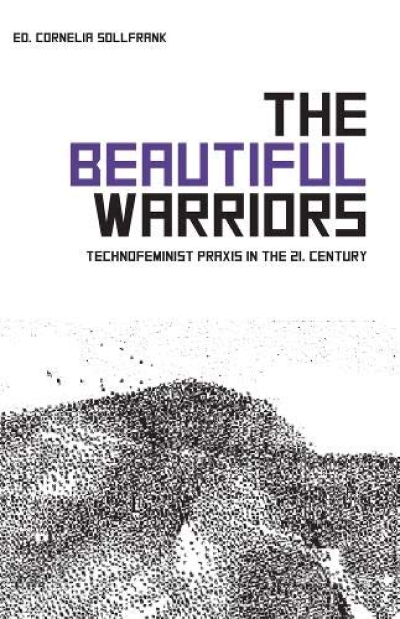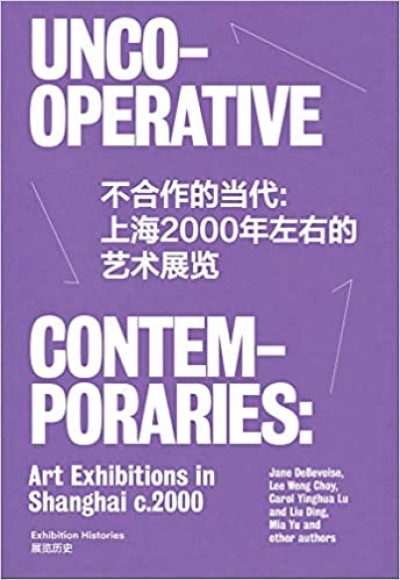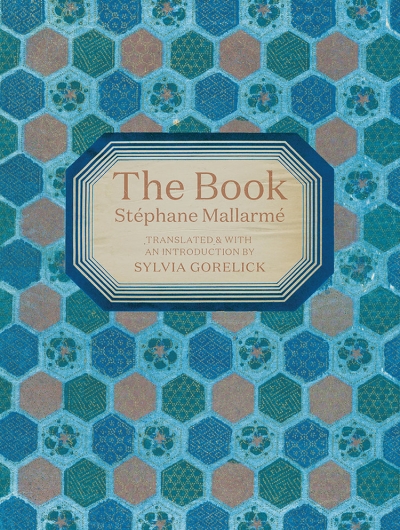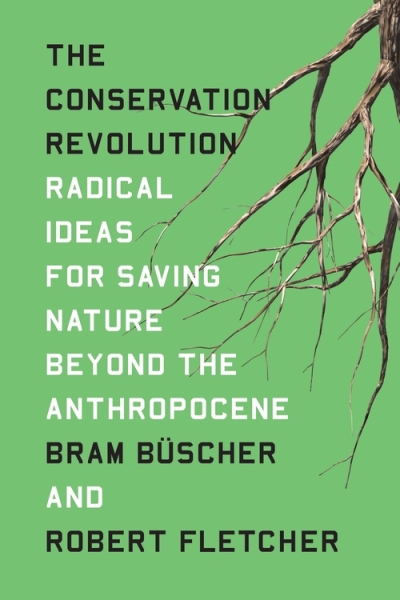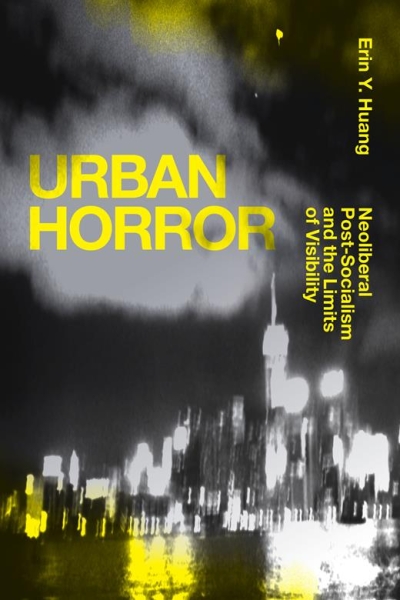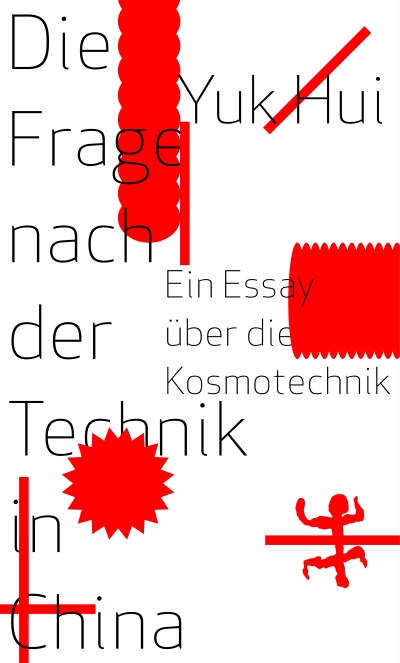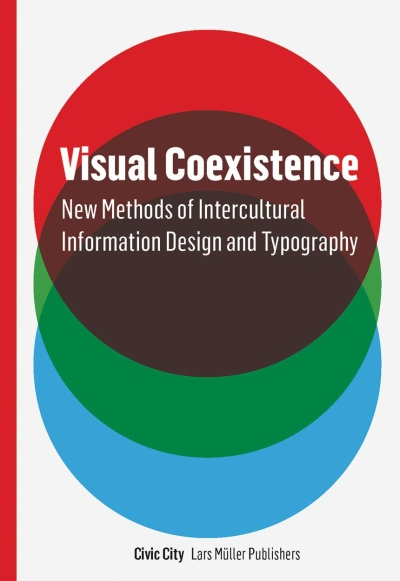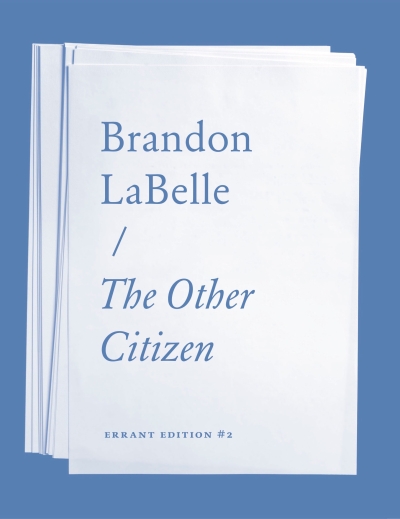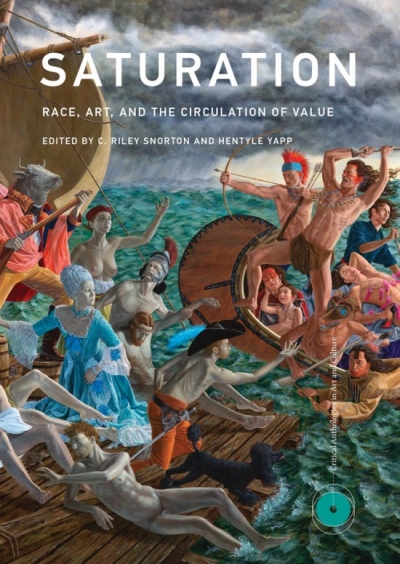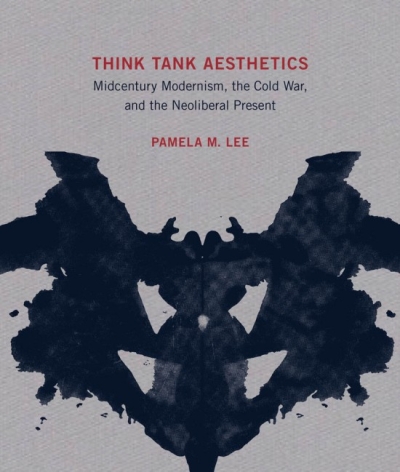Klaus Jan Philipp
Architektur - gezeichnet: Vom Mittelalter bis heute
gerade nicht auf Lager
Quang Truong
Composite Architecture. Building and Design with Carbon…
gerade nicht auf Lager
Yvonne Rainer
Revisions. Essays by Apollo Musagète, Yvonne Rainer, and…
Geert Lovink, Andreas Treske (Hg)
Video Vortex Reader III: Inside the YouTube Decade. INC…
gerade nicht auf Lager
Andrés Jaque / Office for Political…
Superpowers of Scale
gerade nicht auf Lager
Christopher Dell
Das Arbeitende Konzert / The Working Concert
gerade nicht auf Lager
Sandra Schäfer
Moments of Rupture. Spaces, Militancy & Film
gerade nicht auf Lager
Uta Hassler
Bauen und Erhalten. Eine Einführung
gerade nicht auf Lager
Jeanne Gerrity, Anthony Huberman (Eds.)
Where are the tiny revolts? (A Series of Open Questions,…
gerade nicht auf Lager
Hilde Heynen
Sibyl Moholy-Nagy. Kritikerin der Moderne
Lisette Smits (Ed.)
Master of Voice
gerade nicht auf Lager
Julian Caskel
Die Theorie des Rhythmus. Geschichte und Ästhetik einer…
gerade nicht auf Lager
Beate Söntgen, Holger Kuhn, Oona…
Critique: The Stakes of Form
Drehli Robnik
Ansteckkino. Eine politische Philosophie und Geschichte des…
Donatella Di Cesare
Souveränes Virus? Atemnot des Kapitalismus
Alexandra Juhasz, Alisa Lebow (Eds.)
A Companion to Contemporary Documentary Film
gerade nicht auf Lager
Enver Hirsch & Philipp Meuser
Behelfsheim
gerade nicht auf Lager
Juan Duque, Nicolas Lakiotakis, David…
Free Love Paid Love. Expressions of Affection in Mykonos
Juan Duque, David Bergé (Eds.)
The Sleeping Hermaphrodite. Waking up from a Lethargic…
gerade nicht auf Lager
Michel Serres
Branches. A Philosophy of Time, Event and Advent
gerade nicht auf Lager
Tim Markham
Digital Life
gerade nicht auf Lager
David Vincent
A History of Solitude
gerade nicht auf Lager
Clémentine Deliss
The Metabolic Museum
Veit Görner (Hg.)
Lehrstunde der Nachtigall - Gilbert and George, Walther,…
Krystian Woznicki
Undeclared Movements
Pietsch, Schreurs, Mandias, Broekhuizen…
The New Craft School
gerade nicht auf Lager
Designing Lightness. Structures for…
Adriaan Beukers, Ed van Hinte
gerade nicht auf Lager
Sameep Padora
How To Build An Indian House. The Mumbai Example
gerade nicht auf Lager
Frank Wilderson III
Afropessimism
gerade nicht auf Lager
Amanda Beech, Robin Mackay (Eds.)
Construction Site for Possible Worlds
Sianne Ngai
Theory of the Gimmick. Aesthetic Judgment and Capitalist…
Sarah Atkinson, Helen W. Kennedy (Hg)
Live Cinema. Cultures, Economies, Aesthetics
Craig Staff
Retroactivity and Contemporary Art
gerade nicht auf Lager
Andrew Filmer and Juliet Rufford (ed)
Performing Architectures. Projects, Practices, Pedagogies
Heinz Hirdina (Autor), Achim Trebeß /…
Figur und Grund. Entwurfshaltungen im Design von William…
gerade nicht auf Lager
Simon Kretz
The Cosmos of Design. Exploring the Designer’s Mind
gerade nicht auf Lager
Achim Szepanski (Ed.)
Ultrablack of Music
gerade nicht auf Lager
Bonaventure Soh Bejeng Ndikung (Hg.)
I Will Draw a Map of What You Never See
gerade nicht auf Lager
Friedrich von Borries
The World as Project: A Political Theory of Design
gerade nicht auf Lager
Eric C. H. de Bruyn, Sven Lütticken (Ed…
Futurity Report
gerade nicht auf Lager
James Hoff (Ed.)
Yvonne Rainer. Work 1961-73
gerade nicht auf Lager
Eleanor Weber, Camilla Wills (Hg)
What the Fire Sees. A Divided Reader
gerade nicht auf Lager
Anne Lacaton, Carina Sacher (Hg)
Qualities of Inhabiting. Studio Anne Lacaton, Lacaton…
gerade nicht auf Lager
Touré F. Reed
Toward Freedom. The Case Against Race Reductionism
gerade nicht auf Lager
Ivana Bartoletti
An Artificial Revolution. On Power, Politics and AI
Valentin Groebner
Ferienmüde. Als das Reisen nicht mehr geholfen hat
gerade nicht auf Lager
Michael Volkmer, Karin Werner (Hg.)
Die Corona-Gesellschaft. Analysen zur Lage und Perspektiven…
Dieter Bogner (Hg.)
Friedrich Kiesler 1890-1965: Inside the Endless House
gerade nicht auf Lager
Adrian Lahoud, Andrea Bagnato (Hg.)
Rights of Future Generations. Conditions
Japonica Brown-Saracino
The Gentrification Debates A Reader
Jeremy Seabrook, Imran Ahmed Siddiqui
People Without History. India's Muslim Ghettos
David Wilson
Cities and Race. America's New Black Ghettos
Allen S. Weiss
Unpacking my Library. The Autobiography of Teddy
gerade nicht auf Lager
Kris Dittel (ed.)
The Trouble with Value. Art and Its Modes of Valuation
Alexander Kluge, Joseph Vogl
Senkblei der Geschichten. Gespräche
Barbara Schönig, Lisa Vollmer (Hg.)
Wohnungsfragen ohne Ende?! Ressourcen für eine soziale…
gerade nicht auf Lager
Rainald Goetz
Rave
Hélène Frichot
Dirty Theory: Troubling Architecture
gerade nicht auf Lager
Dietmar Dath
Niegeschichte. Science Fiction als Kunst- und Denkmaschine
gerade nicht auf Lager
Lukas Feireiss (Ed.)
Space is the Place. Current Reflections on Art and…
gerade nicht auf Lager
Branden Joseph (Ed.)
Carolee Schneemann: Uncollected Texts
Natalie Fenton, Des Freedman, Justin…
The Media Manifesto
gerade nicht auf Lager
Amador Vega, Peter Weibel, Siegfried…
Dia-Logos: Ramon Llull's Method of Thought and…
Luke Fernandez, Susan J. Matt
Bored, Lonely, Angry, Stupid: Changing Feelings about…
gerade nicht auf Lager
Peter Ortner
The Essence of Berlin-Tegel. Taking Stock of an Airport…
gerade nicht auf Lager
Cornelia Sollfank (Hg)
The Beautiful Warriors. Technofeminist Praxis in the Twenty…
gerade nicht auf Lager
DeBevoise, Chooy, Lu (Hg)
Uncooperative Contemporaries: Art Exhibitions in Shanghai c…
Annette Wehrmann
Serpentine streamer texts
IDEA Magazine
IDEA 390. writtenafterwards. Material Bindings. The Savage…
gerade nicht auf Lager
Jane Bennett
Influx & Efflux. Writing up with Walt Whitman
gerade nicht auf Lager
Slavoj Žižek
Der Exzess der Leere. Ökonomisch-philosophosche Notizen zu…
gerade nicht auf Lager
Jörg Kreienbrock
Sich im Weltall orientieren. Philosophieren im Kosmos 1950…
gerade nicht auf Lager
Stéphane Mallarmé
The Book
gerade nicht auf Lager
Bram Büscher, Robert Fletcher
Conservation Revolution. Radical Ideas for Saving Nature…
gerade nicht auf Lager
Erin Y. Huang
Urban Horror: Neoliberal Post-Socialism and the Limits of…
Christian Huck
Digitalschatten. Das Netz und die Dinge
gerade nicht auf Lager
Byung-Chul Han
Palliativgesellschaft. Schmerz heute
Bastian Lange u.a. (Hg.)
Postwachstumsgeographien. Raumbezüge diverser und…
gerade nicht auf Lager
Thomas Flierl (Hg.)
Bauhaus – Shanghai – Stalinallee – Ha-Neu. Der Lebensweg…
Alexandra Martini
Inspired by Method: Creative tools for the design process
Yuk Hui
Die Frage nach der Technik in China. Ein Essay über die…
gerade nicht auf Lager
Ruedi Baur, Ulrike Felsing (Eds.)
Visual Coexistence. Informationdesign and Typography in the…
Brandon LaBelle
The Other Citizen
Roland Reichenbach, Rolf Bossart (Hg.)
Bildungsferne. Essays und Gespräche zur Kritik der Pädagogik
gerade nicht auf Lager
C. Riley Snorton, Hentyle Yapp (Ed.)
Saturation. Race, Art, and the Circulation of Value
gerade nicht auf Lager
Pamela M. Lee
Think Tank Aesthetics. Midcentury Modernism, the Cold War,…
gerade nicht auf Lager
Lucy Ives (Ed.)
The Saddest Thing Is That I Have Had To Use Words. A…
gerade nicht auf Lager
Marino, Mark C.
Critical Code Studies
gerade nicht auf Lager
Lucy McKenzie, Beca Lipscombe (Eds.)
Atelier E.B: Passer-By
gerade nicht auf Lager
Ursula K. Le Guin
The Carrier Bag Theory of Fiction
gerade nicht auf Lager
John Beck, Ryan Bishop
Technocrats of the Imagination. Art, Technology, and the…
gerade nicht auf Lager
Louise Amoore
Cloud Ethics. Algorithms and the Attributes of Ourselves…
gerade nicht auf Lager
David Grubbs
The Voice in the Headphones
gerade nicht auf Lager
Hertz-Labor Hg. (Peter Weibel, Ludger…
From Xenakis’s UPIC to Graphic Notation Today
gerade nicht auf Lager
Cyril Veillon, Nadja Maillard (Eds.)
Isle of Models. Architecture and Scale
gerade nicht auf Lager
Isabelle Graw
In einer anderen Welt. Notizen 2014-2017
Sabine Hark, Paula-Irene Villa
The Future of Difference. Beyond the Toxic Entanglement of…
gerade nicht auf Lager
Max Haiven
Revenge Capitalism. The Ghosts of Empire, the Demons of…
